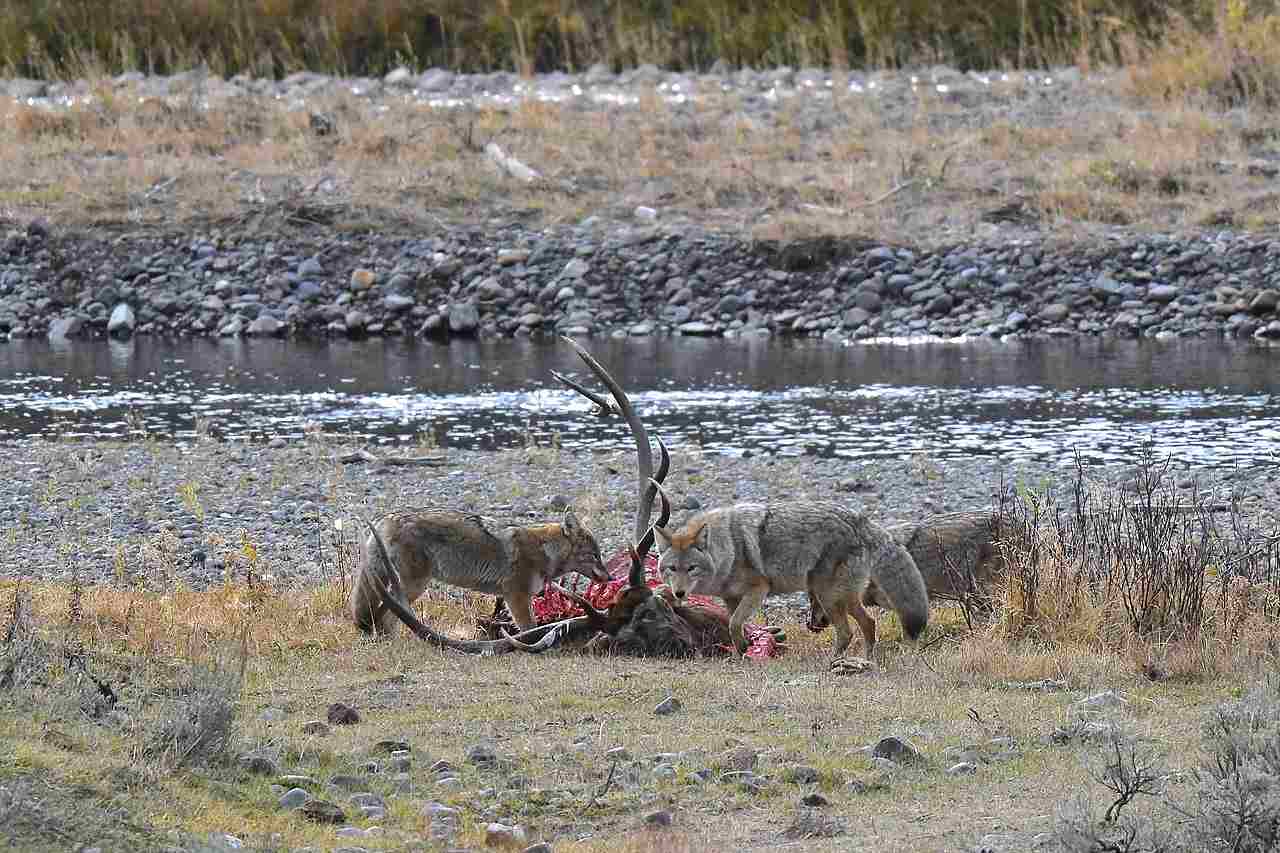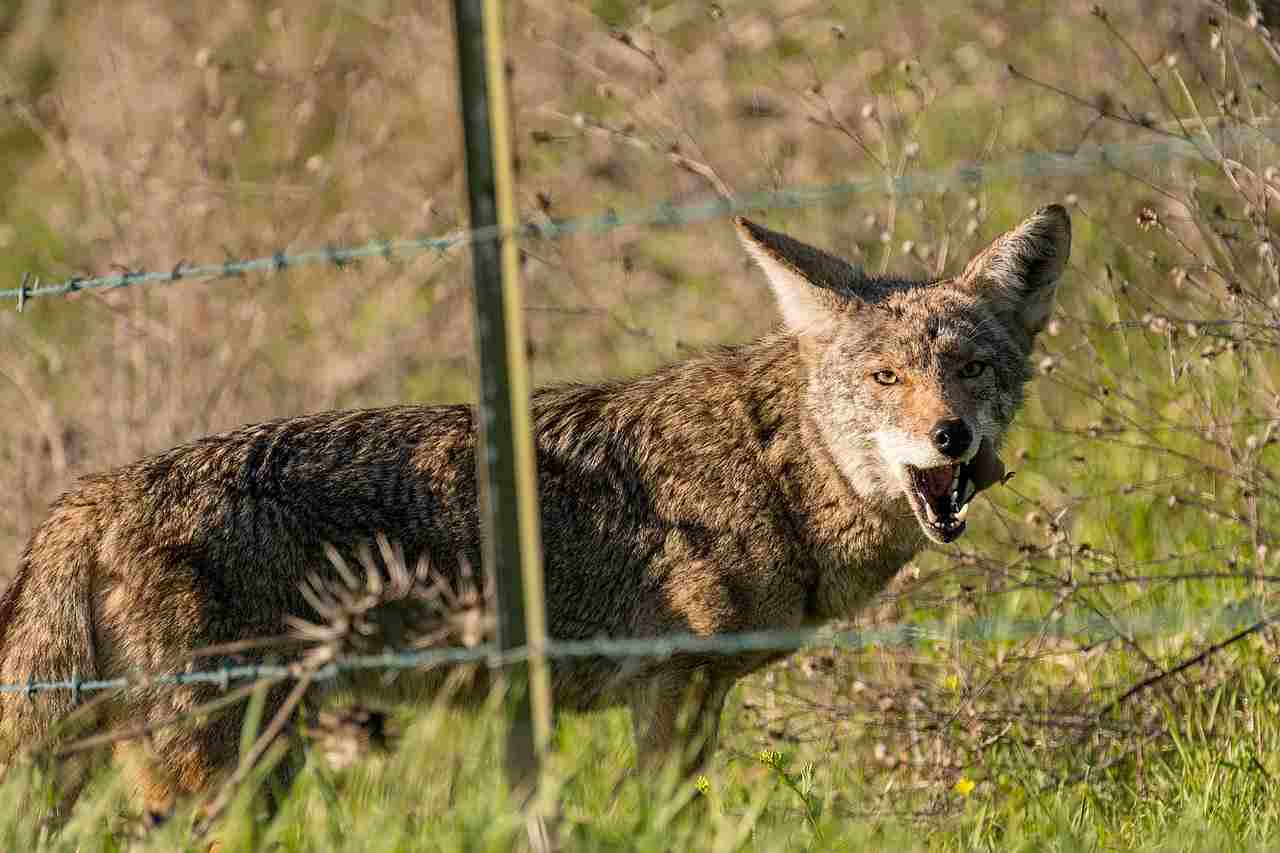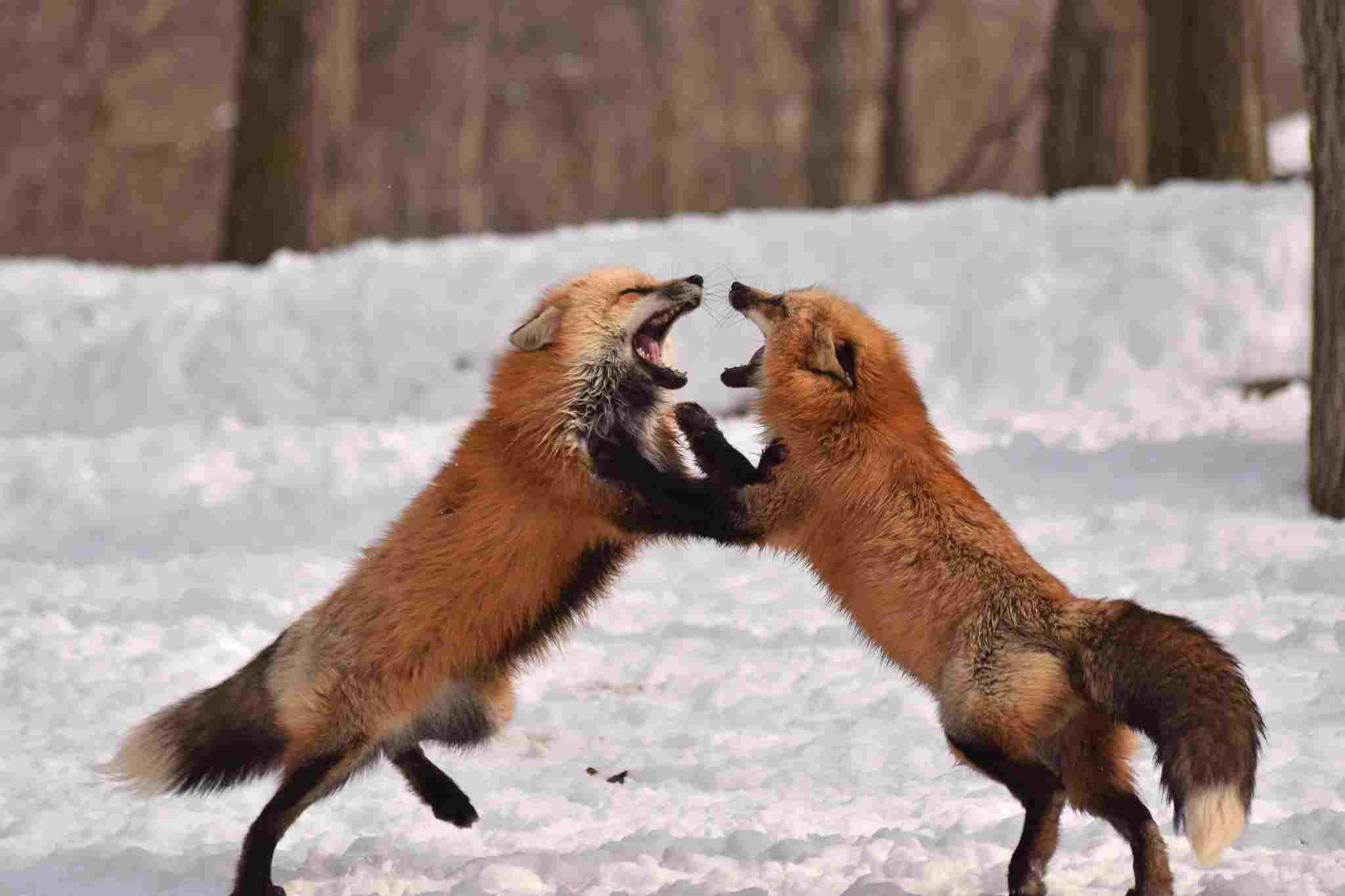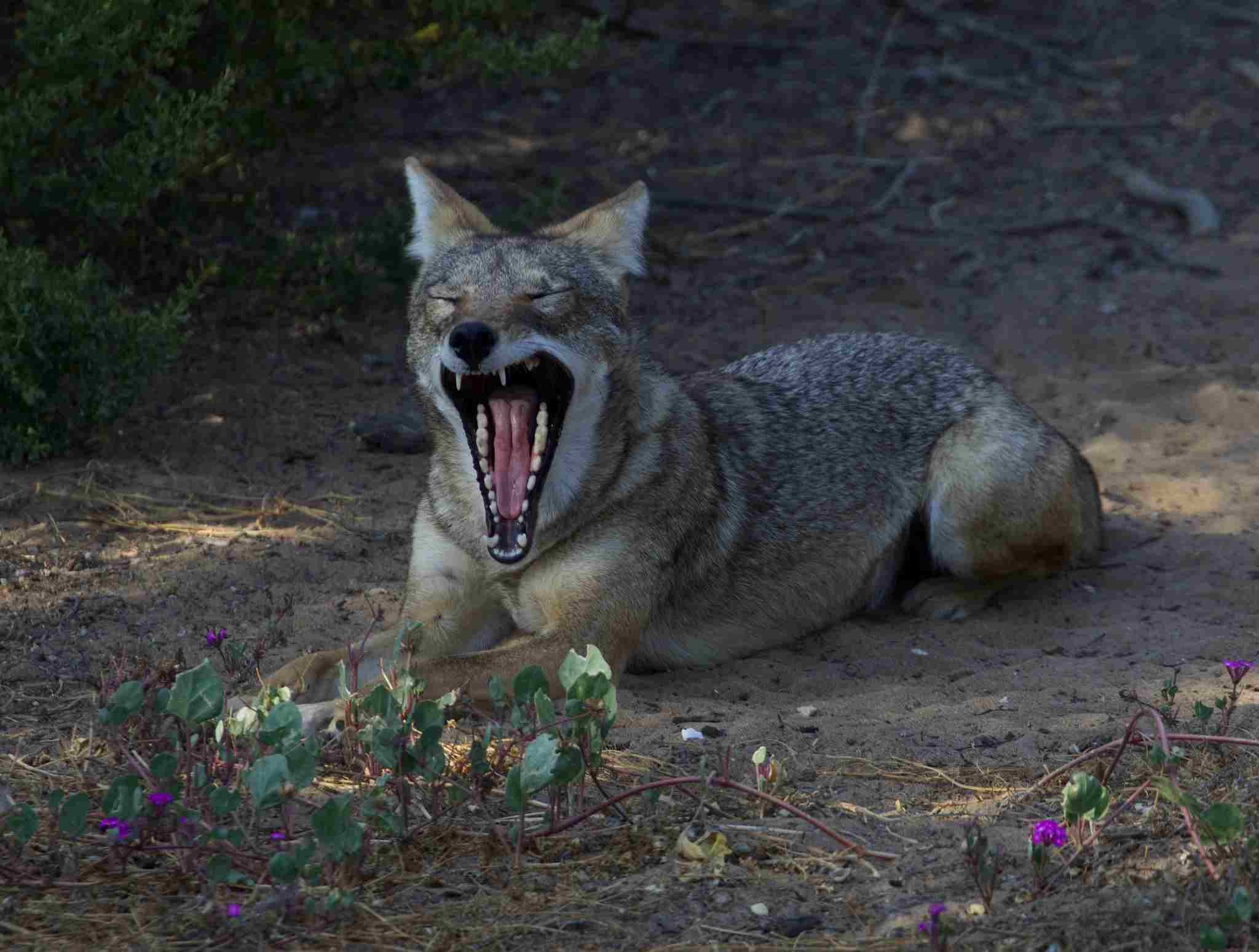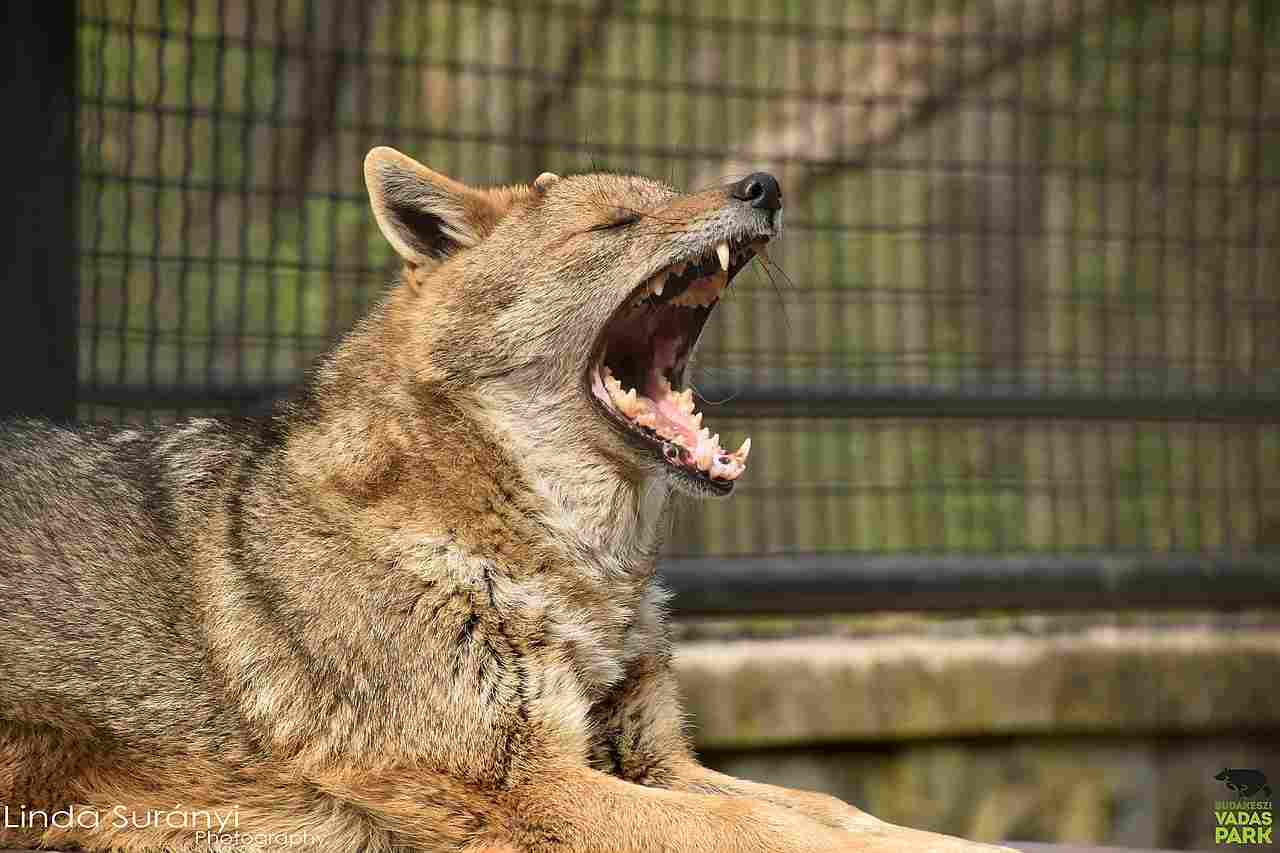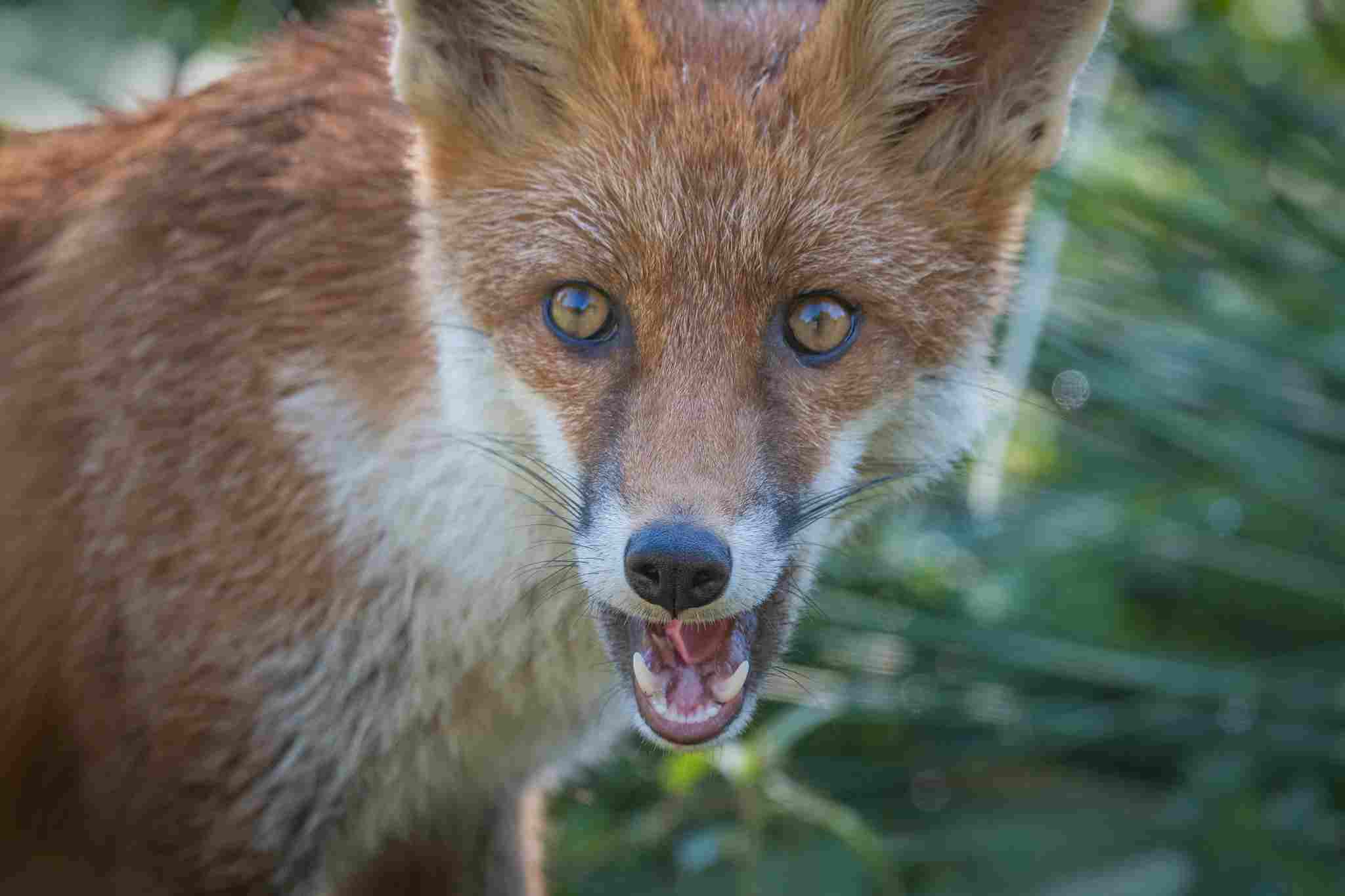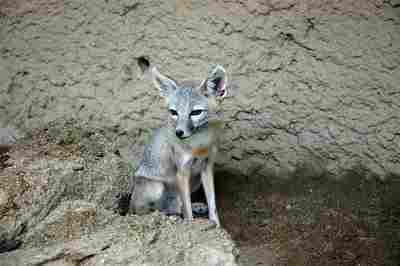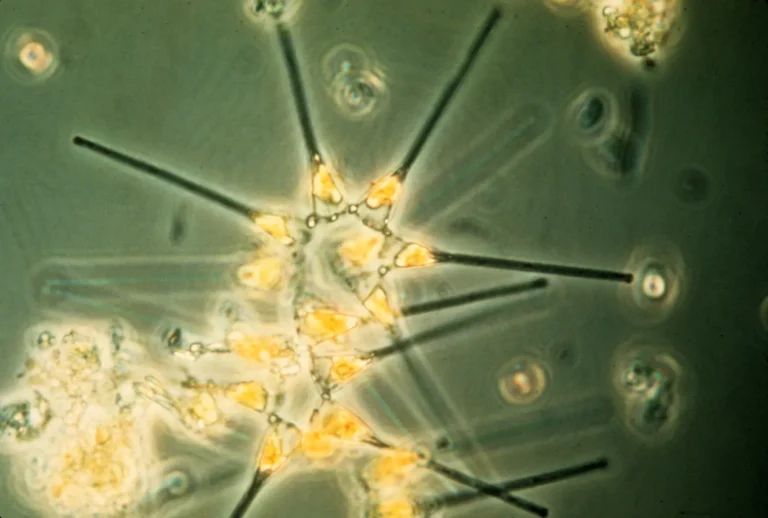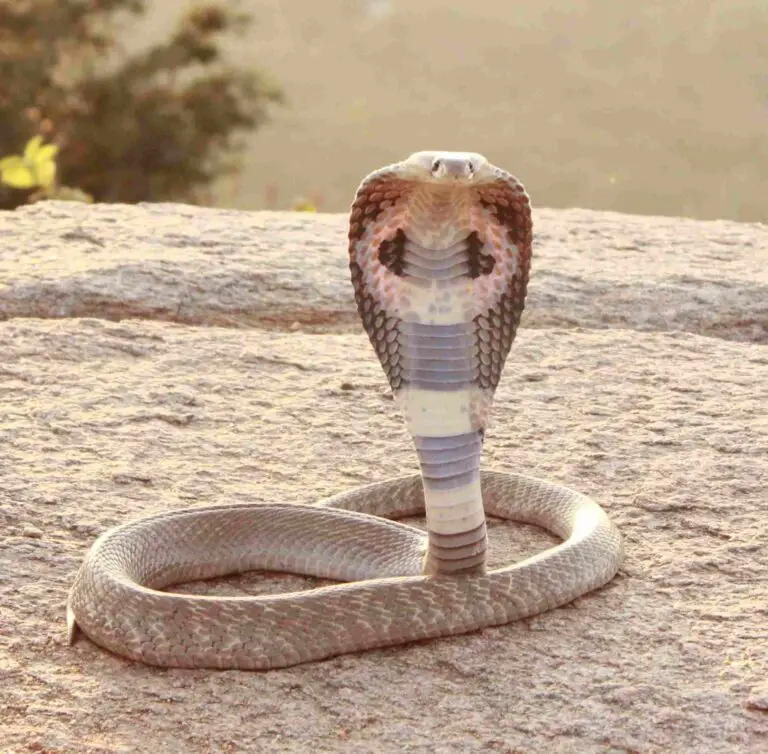Coyote Vs Red Fox Size, Weight, Overall Comparison
Coyotes and red foxes, members of the canid family, navigate diverse environments with distinct characteristics.
This comparative analysis explores various factors, including taxonomy, appearance, size, weight, bite force, physical offensive and defensive advantages, speed, agility, overall physical capacity, habitat preferences, lifespan, feeding habits, social behavior, reproduction methods, parental behavior, proximity to human-inhabited areas, behavior toward humans, danger posed to humans, associated precautions, and conservation status. The primary focus is on assessing the potential outcome in a physical confrontation between a coyote and a red fox.
Coyote vs Red Fox: Who Will Win in a Fight/Physical Confrontation?
A coyote will win a red fox in a fight using its superior size, weight, strength, and predatory capability.
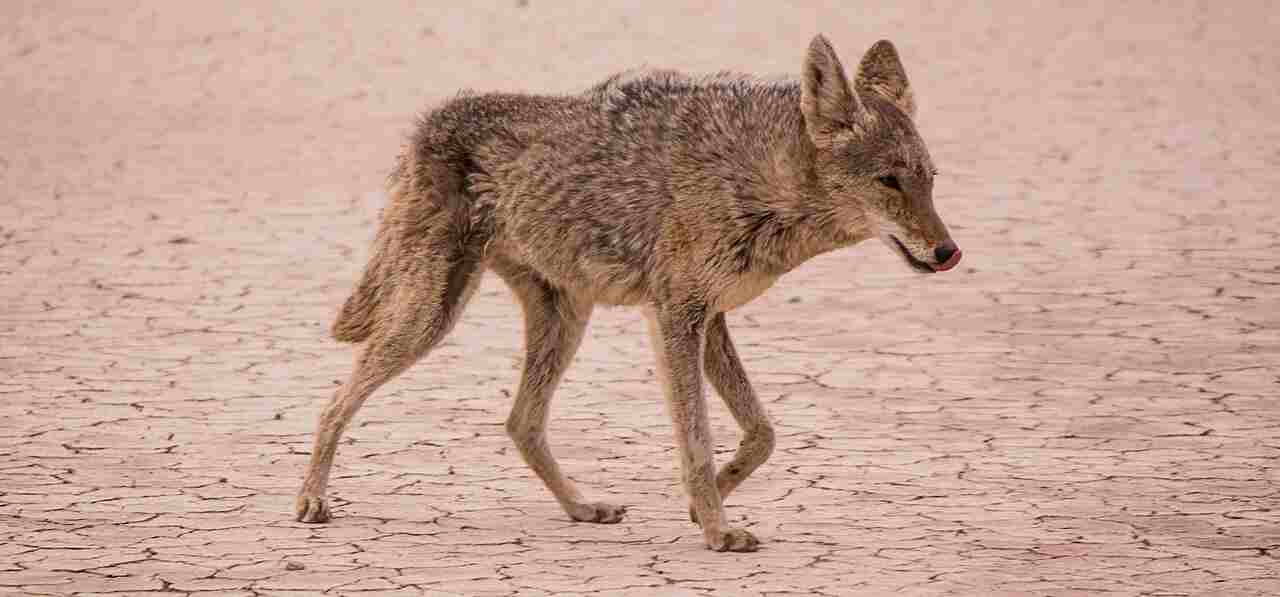
1). Size, Weight, and Strength Advantage:
– A coyote, being larger, heavier, and stronger than a red fox, holds a significant advantage in a one-on-one physical confrontation. The superior size and strength of the coyote contribute significantly to its ability to overpower a red fox in such encounters.
2). Dominance in Individual Strength:
– The inherent physical superiority of the coyote, manifested through its larger size and greater strength, establishes a clear dominance over a red fox in one-on-one confrontations. The coyote’s strength becomes a decisive factor in determining the outcome of a physical altercation.
The contrast in size and strength between a coyote and a red fox underscores the challenges faced by the smaller canid in confrontational scenarios, reflecting the intricate dynamics of interspecies interactions.
*Details of Comparison
| Aspect | Coyote (Canis latrans) |
Red Fox (Vulpes vulpes)
|
| Taxonomy | Kingdom: Animalia, Phylum: Chordata, Class: Mammalia, Order: Carnivora, Family: Canidae, Genus: Canis, Species: latrans |
Kingdom: Animalia, Phylum: Chordata, Class: Mammalia, Order: Carnivora, Family: Canidae, Genus: Vulpes, Species: vulpes
|
| Appearance | Gray to reddish-brown coat, bushy tail, erect ears, pointed snout |
Rust-colored fur, white underbelly, black legs, bushy tail with white tip
|
| Size | Larger, 32-37 inches in length (excluding tail) |
Smaller, 18-35 inches in length (excluding tail)
|
| Weight | 15-46 pounds (varies by sex) |
6-24 pounds (varies by region and subspecies)
|
| Bite Force | Powerful bite for hunting small to medium-sized mammals |
Capable bite force, adapted for omnivorous diet
|
| Offensive Advantages | Robust build, strong jaws, and powerful bite |
Agility and speed for hunting, sharp teeth and claws
|
| Defensive Advantages | Sharp claws, agility, and high-speed capabilities |
Agility, speed, and swift movements
|
| Speed | Up to 40 mph | Up to 30 mph |
| Agility | Moderately agile |
Highly agile and adept at quick movements
|
| Overall Physical Capacity | Robust physique, combining strength, speed, and agility |
High agility and cunning, well-suited for hunting and evasion
|
| Habitat Preference(s) | Highly adaptable, diverse habitats including forests, grasslands, deserts, and urban areas |
Versatile, adapting to forests, grasslands, and urban areas
|
| Tracks | Claw marks, elongated shape |
Prominent claw marks, more oval shape
|
| Lifespan | 6-8 years (wild) | 3-4 years (wild) |
| Mode of Feeding | Opportunistic, diverse diet including small mammals, birds, fruits, and carrion |
Omnivorous, feeding on small mammals, birds, insects, fruits, and carrion
|
| Social Behavior | Complex social structures, can be solitary, form mated pairs, or live in family groups |
Generally solitary, may form monogamous pairs during breeding season
|
| Reproduction | Monogamous pairs, breeding once a year |
Monogamous pairs during breeding season, giving birth to a litter of kits
|
| Parental Behavior | Both parents contribute to raising and protecting pups |
Both parents care for offspring, teaching hunting and survival skills
|
| Proximity to Human Areas | Adaptable to suburban and urban areas, potential conflicts with pets |
Adaptable to human-altered landscapes, may exploit human food resources
|
| Behavior Toward Humans | Generally avoid direct confrontations with humans |
Typically shy, avoid direct contact with humans
|
| Danger Posed to Humans | Low risk, but conflicts may arise in certain situations |
Minimal danger, generally avoid direct interaction
|
| Conservation Status | Not endangered, stable populations |
“Least Concern” (IUCN), stable populations
|
Key Points
- Coyotes are larger, with a more robust build, while red foxes are smaller and more fox-like.
- Both species exhibit adaptability to various habitats, including urban areas.
- Coyotes have complex social structures, while red foxes are primarily solitary.
- Coyotes have a powerful bite and are more offensive, while red foxes rely on agility and speed.
- Both species pose minimal danger to humans, with potential conflicts in certain situations.
- Conservation status: Coyotes are stable, and red foxes are listed as “Least Concern” (IUCN).
1. Taxonomy:
Coyote (Canis latrans):
Kingdom: Animalia
Phylum: Chordata
Class: Mammalia
Order: Carnivora
Family: Canidae
Genus: Canis
Species: latrans
Red Fox (Vulpes vulpes):
Kingdom: Animalia
Phylum: Chordata
Class: Mammalia
Order: Carnivora
Family: Canidae
Genus: Vulpes
Species: vulpes
2. Appearance:

Coyote (Canis latrans):
Appearance: Coyotes typically have a gray to reddish-brown coat, a bushy tail, erect ears, and a pointed snout. They display a general resemblance to domestic dogs but are often more slender.
Comparison: Coyotes are larger than most red foxes, with a more robust build. Their fur coloration varies, but it commonly includes shades of gray and brown.
Ecological Implications: Coyotes’ appearance aids in their adaptation to diverse habitats, blending in with a range of environments, which contributes to their success in different ecosystems.
Red Fox (Vulpes vulpes):
Appearance: Red foxes exhibit a rust-colored fur coat with a white underbelly, black legs, and a bushy tail often tipped with white. They have a slender body, pointed ears, and a distinct, elongated snout.
Comparison: Red foxes are smaller than coyotes, with a more fox-like appearance. Their characteristic red fur serves as a form of camouflage in certain environments.
Ecological Implications: The red fox’s appearance aids in both thermoregulation and camouflaging, enhancing its ability to survive in a variety of habitats, from forests to urban areas.
3. Size:
Coyote (Canis latrans):
Size: Coyotes are generally larger than red foxes. Adult coyotes measure about 32 to 37 inches in length, excluding the tail, and stand about 23 to 26 inches tall at the shoulder.
Red Fox (Vulpes vulpes):
Size: Red foxes are smaller than coyotes. They typically measure around 18 to 35 inches in length, excluding the tail, and stand about 14 to 16 inches tall at the shoulder.
4. Weight:
Coyote (Canis latrans):
Weight: Adult coyotes weigh between 15 to 46 pounds, with males generally being larger than females.
Red Fox (Vulpes vulpes):
Weight: Red foxes are lighter than coyotes, with an average weight ranging from 6 to 24 pounds, depending on the region and subspecies.
5. Bite Force:
Coyote (Canis latrans):
Bite Force: Coyotes have a powerful bite force, adapted for capturing and consuming a variety of prey. Their bite force is essential for hunting small to medium-sized mammals.
Red Fox (Vulpes vulpes):
Bite Force: While red foxes have a capable bite force, it is generally adapted for their omnivorous diet, which includes small mammals, birds, insects, and fruits.
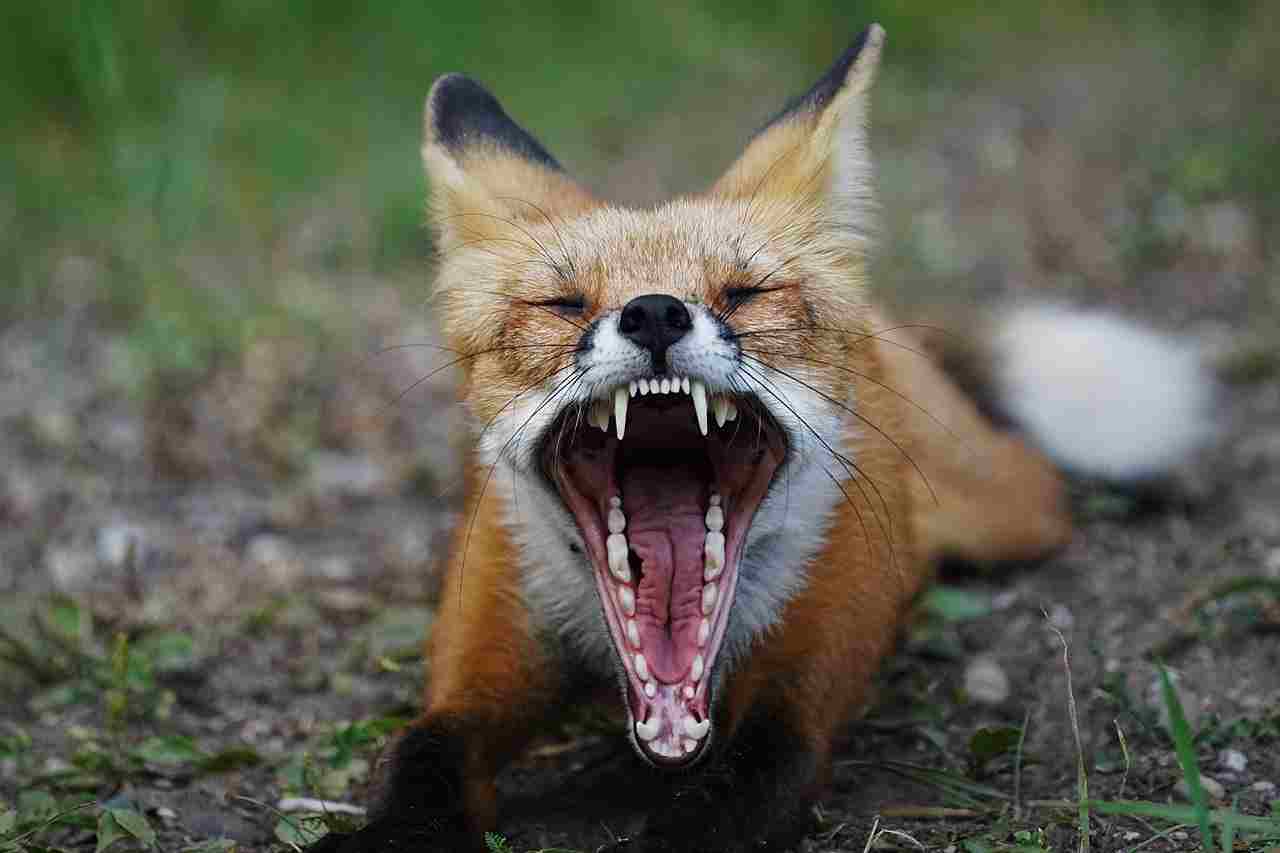
6. Physical Offensive Advantages:
Coyote (Canis latrans):
Offensive Features: Coyotes possess strong jaws and teeth, enabling them to capture and consume a wide range of prey, including small mammals and birds.
Comparison: Coyotes have a robust build and a powerful bite, providing them with effective offensive capabilities in hunting and scavenging.
Ecological Implications: The coyote’s offensive advantages contribute to its role as a mesopredator, impacting prey populations and influencing the structure of ecosystems.
Red Fox (Vulpes vulpes):
Offensive Features: Red foxes rely on agility and speed to catch prey. They have sharp teeth and claws, allowing them to hunt small mammals, birds, and insects.
Comparison: While not as robust as coyotes, red foxes use their agility for effective hunting, utilizing a combination of stealth and quick movements.
Ecological Implications: The red fox’s offensive abilities contribute to controlling small mammal populations, influencing ecosystem dynamics in their respective habitats.
7. Physical Defensive Advantages:
Coyote (Canis latrans):
Defensive Features: Coyotes have sharp claws, agility, and the ability to run at high speeds, providing them with effective defensive mechanisms against larger predators.
Comparison: Coyotes are adapted for both offense and defense, with their speed and agility serving as crucial defensive tools.
Ecological Implications: These defensive features contribute to the coyote’s adaptability, allowing it to evade predators and protect its territory.
Red Fox (Vulpes vulpes):
Defensive Features: Red foxes use their agility and speed as primary defensive mechanisms. They can quickly escape from potential threats and predators.
Comparison: While not as robust as coyotes, red foxes rely on their ability to evade predators through agility and swift movements.
Ecological Implications: The red fox’s defensive adaptations contribute to its survival in various ecosystems, allowing it to avoid predation and thrive in diverse habitats.
8. Speed:
Coyote (Canis latrans):
Speed: Coyotes are fast runners, capable of reaching speeds up to 40 miles per hour. Their speed is advantageous for both hunting and escaping from predators.
Red Fox (Vulpes vulpes):
Speed: Red foxes are agile and swift, with a maximum running speed of around 30 miles per hour. Their speed aids in capturing prey and avoiding potential threats.
9. Agility:
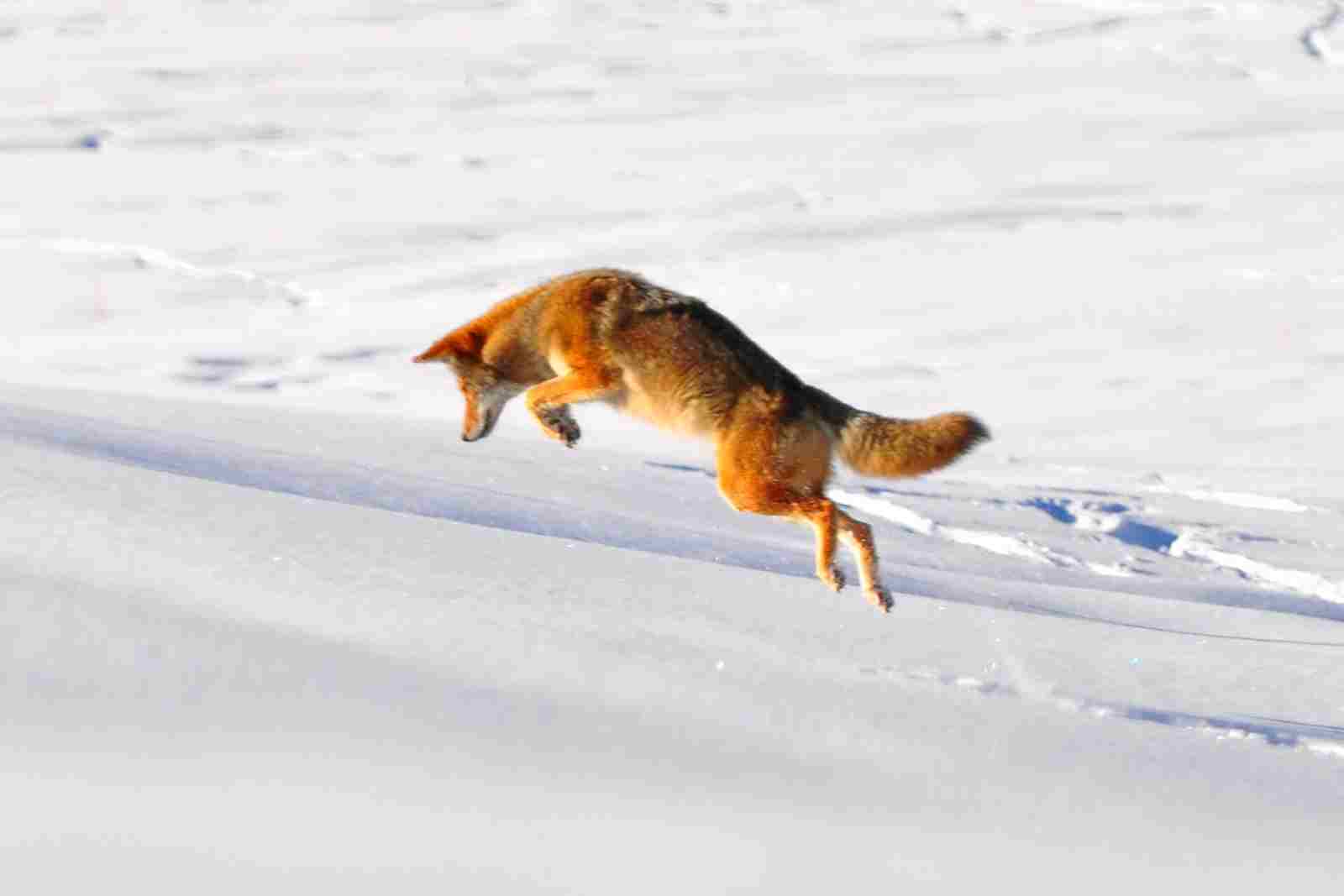
Coyote (Canis latrans):
Agility: Coyotes exhibit good agility, allowing them to navigate various terrains. They can make quick turns and maneuvers while hunting or evading predators.
Comparison: Coyotes are moderately agile, combining agility with their speed and endurance to adapt to different environments.
Ecological Implications: Coyotes’ agility enhances their versatility, enabling them to exploit a wide range of habitats and pursue diverse prey species.
Red Fox (Vulpes vulpes):
Agility: Red foxes are highly agile, with the ability to make rapid movements and navigate through dense vegetation. Their agility aids in hunting and escaping predators.
Comparison: Red foxes are known for their exceptional agility, which is a key trait in their hunting strategy and evasion tactics.
Ecological Implications: The red fox’s agility contributes to its success in varied ecosystems, helping it catch prey efficiently and avoid potential dangers.
10. Overall Physical Capacity:
Coyote (Canis latrans):
Overall Physical Capacity: Coyotes possess a robust physique, combining strength, speed, and agility. Their endurance allows them to cover large territories in search of food.
Comparison: Coyotes have a well-rounded physical capacity, making them adaptable predators capable of thriving in diverse environments.
Ecological Implications: The overall physical capacity of coyotes contributes to their ecological role as mesopredators, influencing prey populations and ecosystem dynamics.
Red Fox (Vulpes vulpes):
Overall Physical Capacity: Red foxes, while smaller than coyotes, exhibit a high level of agility and cunning. Their physical traits are well-suited for hunting and avoiding predators.
Comparison: Red foxes may lack the size of coyotes, but their overall physical capacity is tailored to their ecological niche, emphasizing agility and adaptability.
Ecological Implications: The red fox’s physical capacity allows it to exploit a variety of habitats, contributing to its success as a versatile omnivore.
11. Habitat Preference(s):
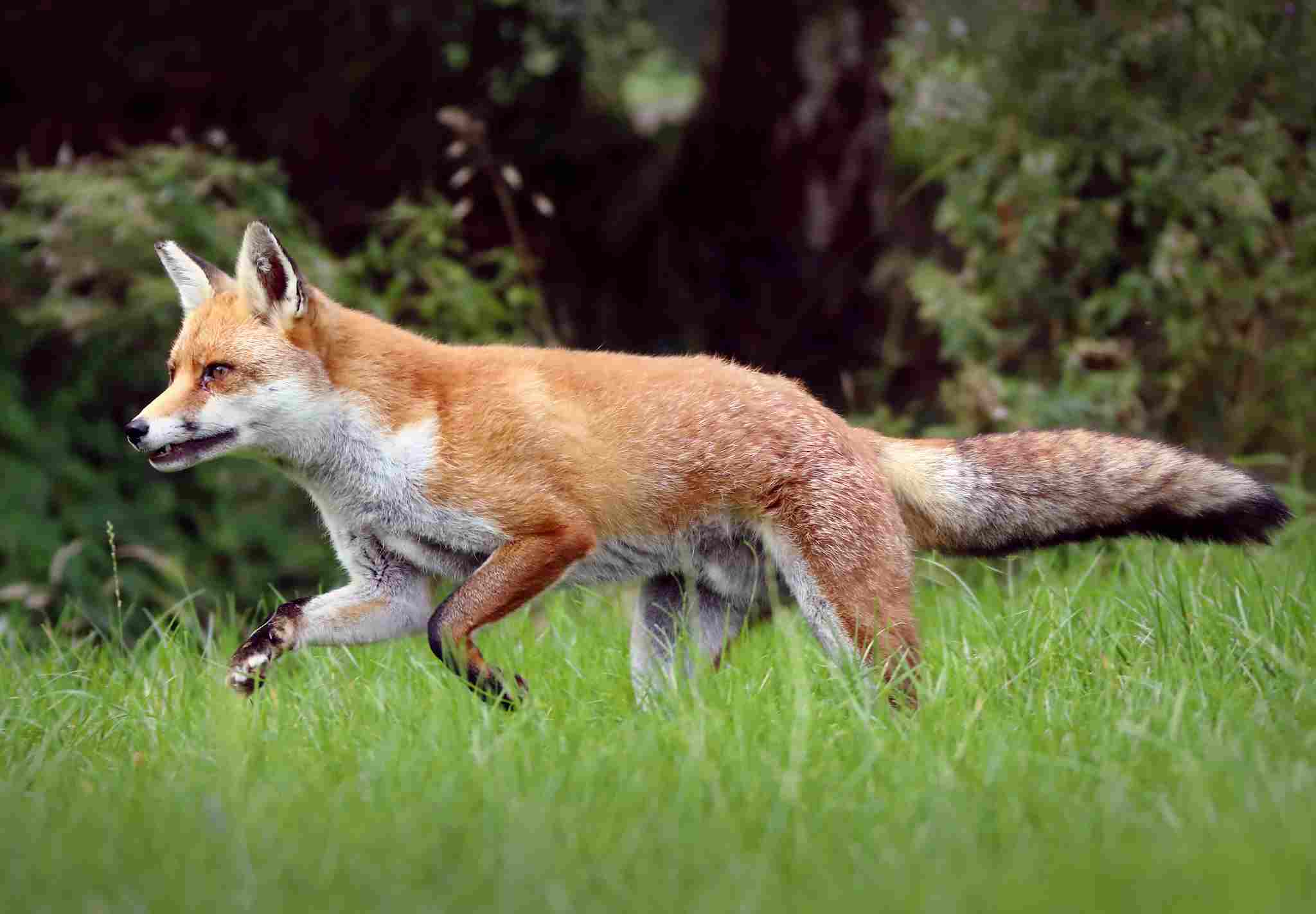
Coyote (Canis latrans):
Habitat Preference(s): Coyotes are highly adaptable and can thrive in various environments, including forests, grasslands, deserts, and urban areas.
Comparison: Coyotes exhibit a broad habitat tolerance, enabling them to occupy diverse ecosystems across North and Central America.
Ecological Implications: Coyotes’ ability to adapt to different habitats has ecological implications, influencing prey populations and sometimes leading to conflicts with human activities.
Red Fox (Vulpes vulpes):
Habitat Preference(s): Red foxes are versatile in their habitat choices, inhabiting forests, grasslands, and urban areas. They are particularly adaptable to human-altered landscapes.
Comparison: Similar to coyotes, red foxes display habitat versatility, with a capacity to thrive in a range of environments.
Ecological Implications: The adaptability of red foxes to various habitats contributes to their ecological success, affecting local biodiversity and sometimes interacting with human communities.
12. Tracks:
Coyote (Canis latrans):
Tracks: Coyote tracks typically show distinctive claw marks and a more elongated shape compared to domestic dog tracks. The tracks may vary in size based on the individual’s age and sex.
Red Fox (Vulpes vulpes):
Tracks: Red fox tracks are smaller than those of coyotes, featuring prominent claw marks and a more oval shape. Their tracks may be found in various terrains, showcasing their adaptability.
13. Lifespan:
Coyote (Canis latrans):
Lifespan: In the wild, coyotes have an average lifespan of around 6 to 8 years. However, factors such as food availability, predation, and human activities can influence their longevity.
Red Fox (Vulpes vulpes):
Lifespan: Red foxes typically live for 3 to 4 years in the wild. Similar to coyotes, their lifespan is influenced by environmental factors and potential threats.
14. Mode of Feeding:
Coyote (Canis latrans):
Mode of Feeding: Coyotes are opportunistic feeders, consuming a varied diet that includes small mammals, birds, fruits, and carrion. Their adaptability in feeding contributes to their success in different ecosystems.
Red Fox (Vulpes vulpes):
Mode of Feeding: Red foxes are omnivores, feeding on small mammals, birds, insects, fruits, and occasionally scavenging carrion. Their diverse diet allows them to exploit a wide range of food resources.
15. Social Behavior:
Coyote (Canis latrans):
Social Behavior: Coyotes exhibit complex social structures. They can be solitary, form mated pairs, or live in family groups. Cooperative hunting and territorial behaviors are common among coyotes.
Red Fox (Vulpes vulpes):
Social Behavior: Red foxes are generally solitary animals, except during the breeding season when they form monogamous pairs. However, some populations may exhibit more social behavior, especially in regions with abundant food resources.
16. Mode of Reproduction:
Coyote (Canis latrans):
Mode of Reproduction: Coyotes typically mate for life, forming monogamous pairs. Breeding occurs once a year, and the female gives birth to a litter of pups after a gestation period of about 60 to 63 days.
Red Fox (Vulpes vulpes):
Mode of Reproduction: Red foxes also form monogamous pairs during the breeding season. Breeding occurs annually, and the female gives birth to a litter of kits after a gestation period of about 51 to 53 days.
17. Parental Behavior:
Coyote (Canis latrans):
Parental Behavior: Both parents contribute to raising and protecting the pups. The family group is involved in hunting and teaching the young coyotes essential survival skills.
Red Fox (Vulpes vulpes):
Parental Behavior: Red fox parents work together to care for and protect their offspring. The young foxes, called kits, are taught hunting and survival skills before they eventually become independent.
18. Proximity to Human-Inhabited Areas:
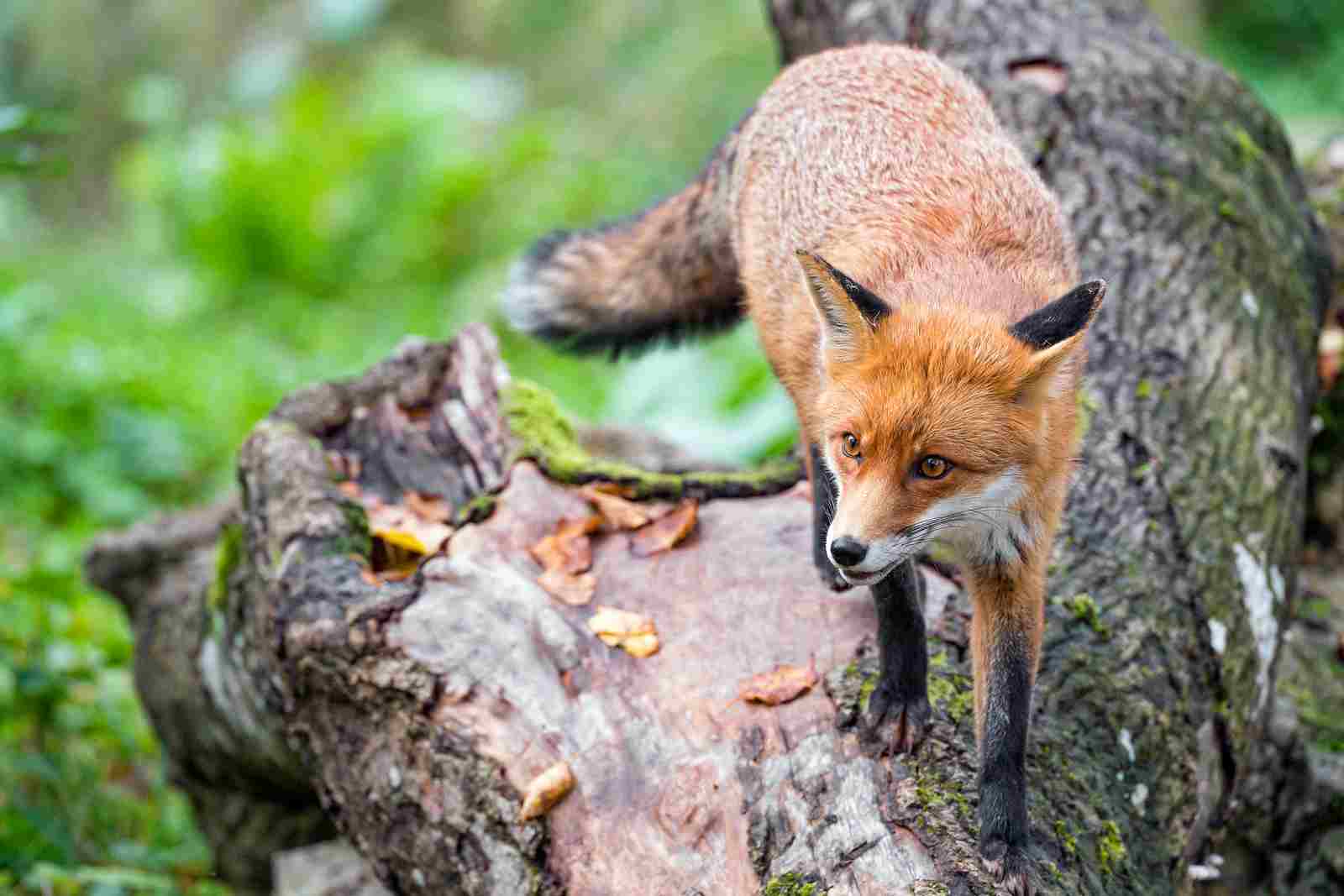
Coyote (Canis latrans):
Proximity: Coyotes are highly adaptable to human-altered landscapes and can be found in suburban and urban areas. They may prey on small pets and scavange in residential areas.
Comparison: Coyotes often coexist with humans, adapting to various environments. Human expansion into their habitats can lead to increased interactions.
Red Fox (Vulpes vulpes):
Proximity: Red foxes are adaptable to human presence and can be found in suburban areas, parks, and even urban environments. They may exploit human food resources and shelter in human-made structures.
Comparison: Similar to coyotes, red foxes demonstrate a degree of adaptability to human-inhabited areas, sometimes leading to conflicts and interactions.
19. Behavior Toward Humans:
Coyote (Canis latrans):
Behavior Toward Humans: Coyotes generally avoid direct confrontations with humans. However, they may become more bold and habituated in areas with easy access to human food sources.
Red Fox (Vulpes vulpes):
Behavior Toward Humans: Red foxes are typically shy and avoid direct contact with humans. However, in urban areas, they may become more accustomed to human presence, especially if food is readily available.
20. Danger Posed to Humans:
Coyote (Canis latrans):
Danger Posed: Coyotes, in general, pose a low risk to humans. However, in rare cases, conflicts may arise, especially if coyotes become habituated to human presence or if there are concerns about protecting pets.
Red Fox (Vulpes vulpes):
Danger Posed: Red foxes pose minimal danger to humans. They are not known to be aggressive toward people and typically avoid direct interaction. The risk of conflict is generally low.
21. Associated Precautions:
Coyote (Canis latrans):
Precautions: To minimize conflicts, it’s advisable for people in coyote-prone areas to secure small pets, avoid feeding coyotes, and eliminate potential food sources that may attract them.
Red Fox (Vulpes vulpes):
Precautions: In areas with red foxes, precautions may include securing garbage, avoiding intentional feeding, and ensuring pets are supervised, particularly in regions where human and fox interactions are more common.
22. Conservation Status:
Coyote (Canis latrans):
Conservation Status: Coyotes are not considered endangered and have adapted well to human-altered landscapes. Their populations are generally stable, and they play a vital role in controlling small mammal populations.
Red Fox (Vulpes vulpes):
Conservation Status: Red foxes are not globally threatened and are listed as of “Least Concern” by the International Union for Conservation of Nature (IUCN). However, localized populations may face threats due to habitat loss and hunting.
Conclusion:
I. Similarities:
Both coyotes and red foxes belong to the family Canidae and share the order Carnivora.
They exhibit adaptability to diverse habitats, including urban areas.
Coyotes and red foxes are opportunistic feeders with omnivorous diets, contributing to their ecological success.
II. Differences:
Coyotes are generally larger and have a more robust build compared to the smaller and more fox-like appearance of red foxes.
Coyotes form complex social structures, including family groups, while red foxes are primarily solitary, with social behavior limited to the breeding season.
Coyotes exhibit greater adaptability to various ecosystems, including deserts, whereas red foxes are highly adaptable but often prefer forested environments.
